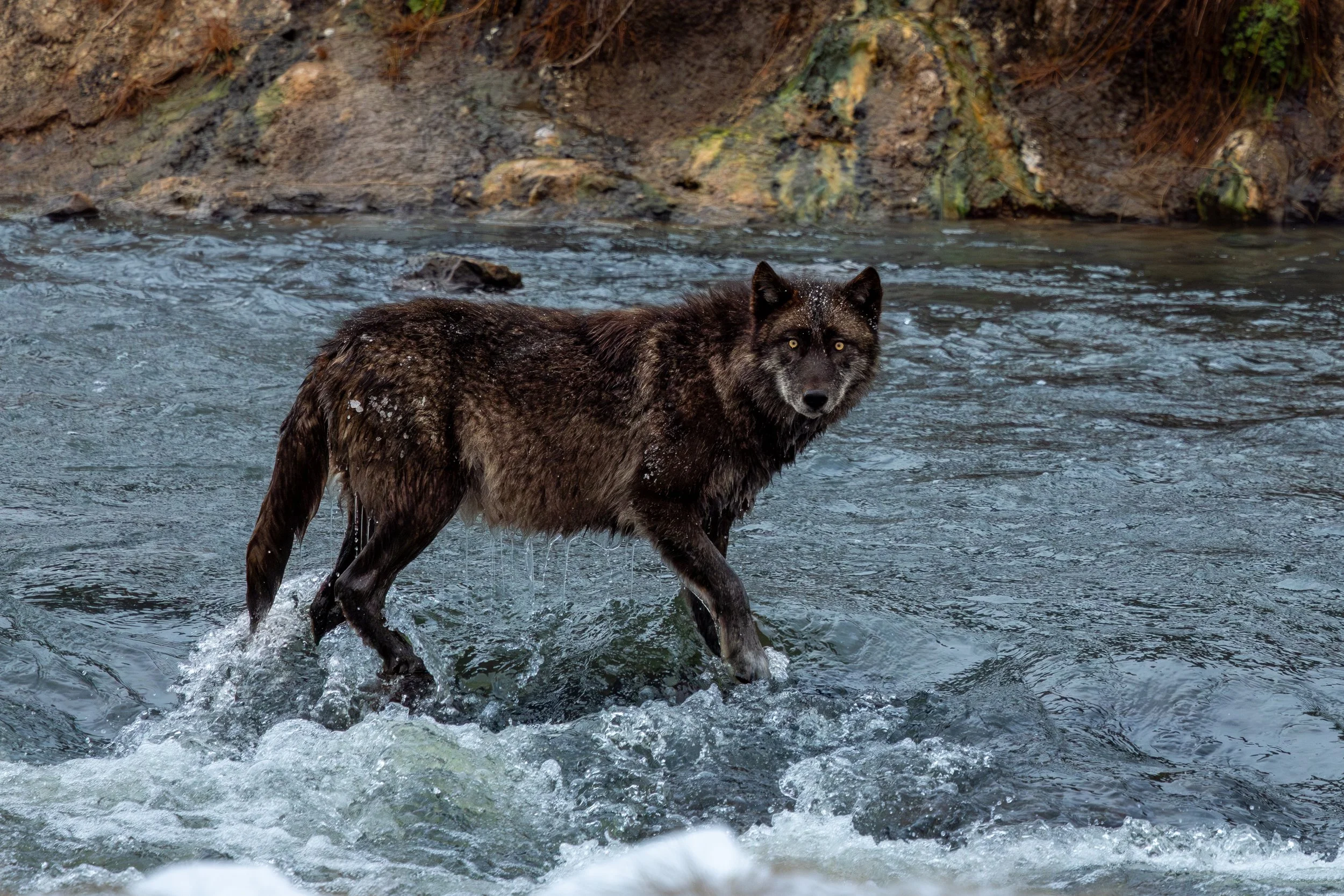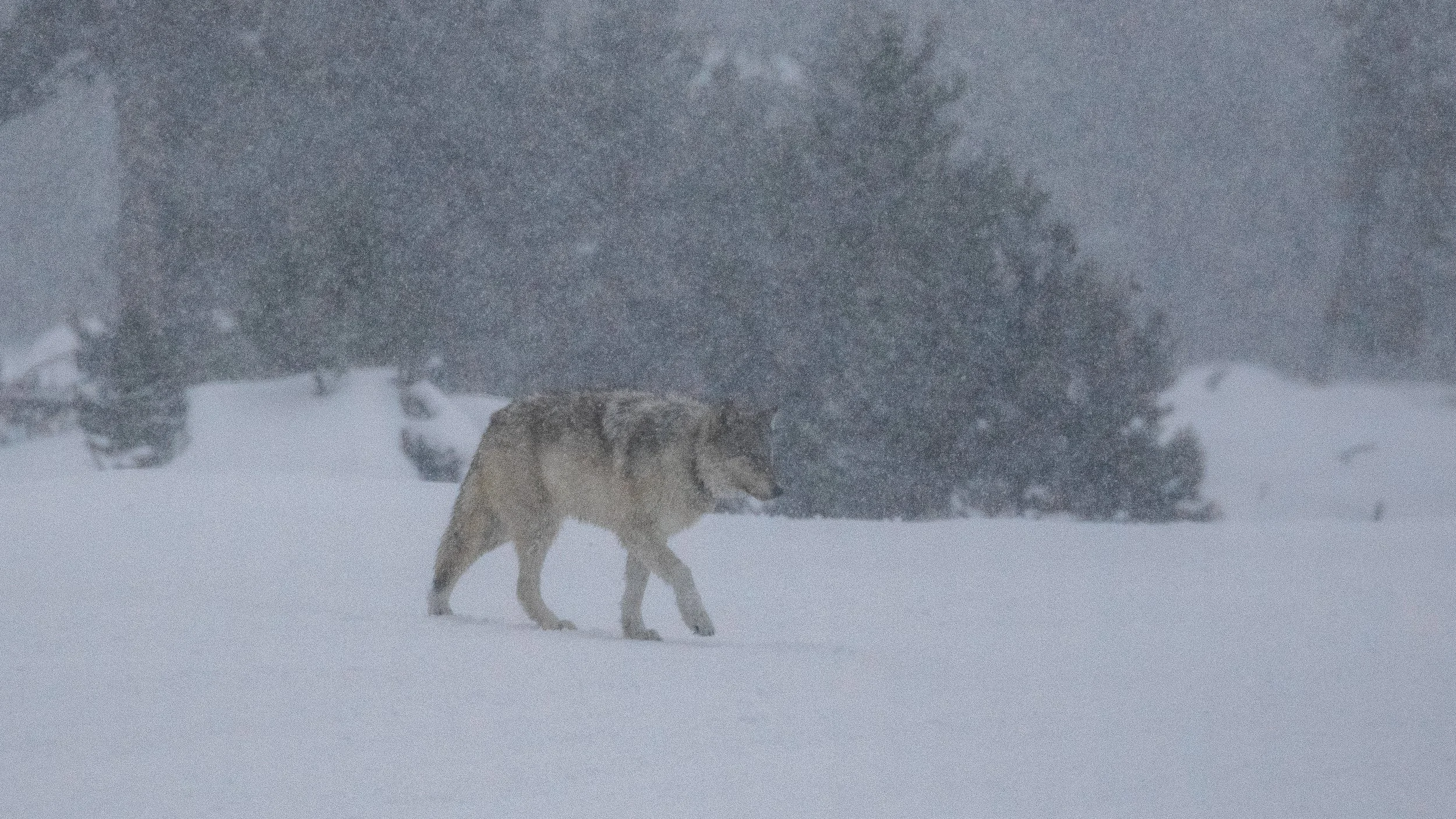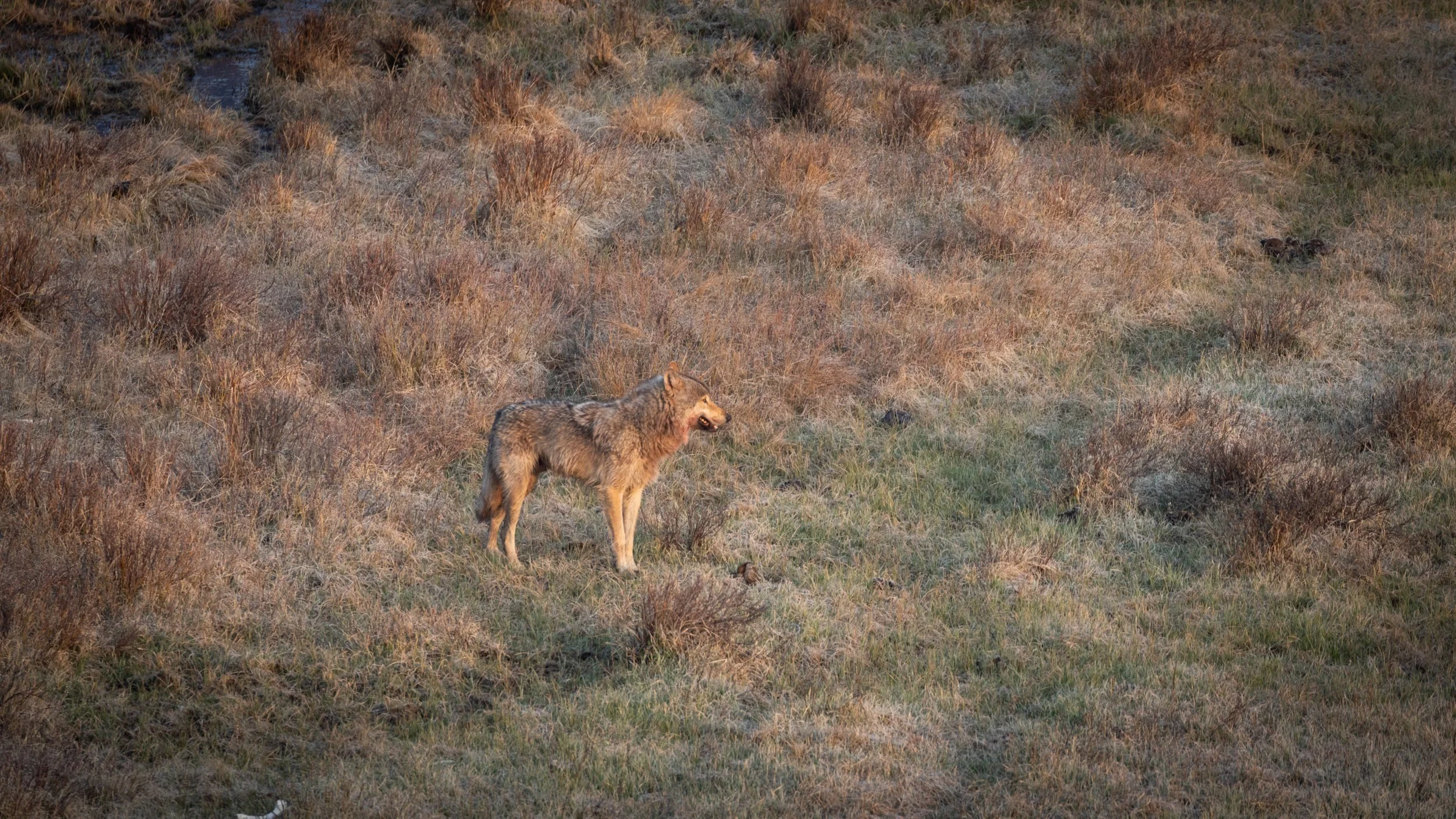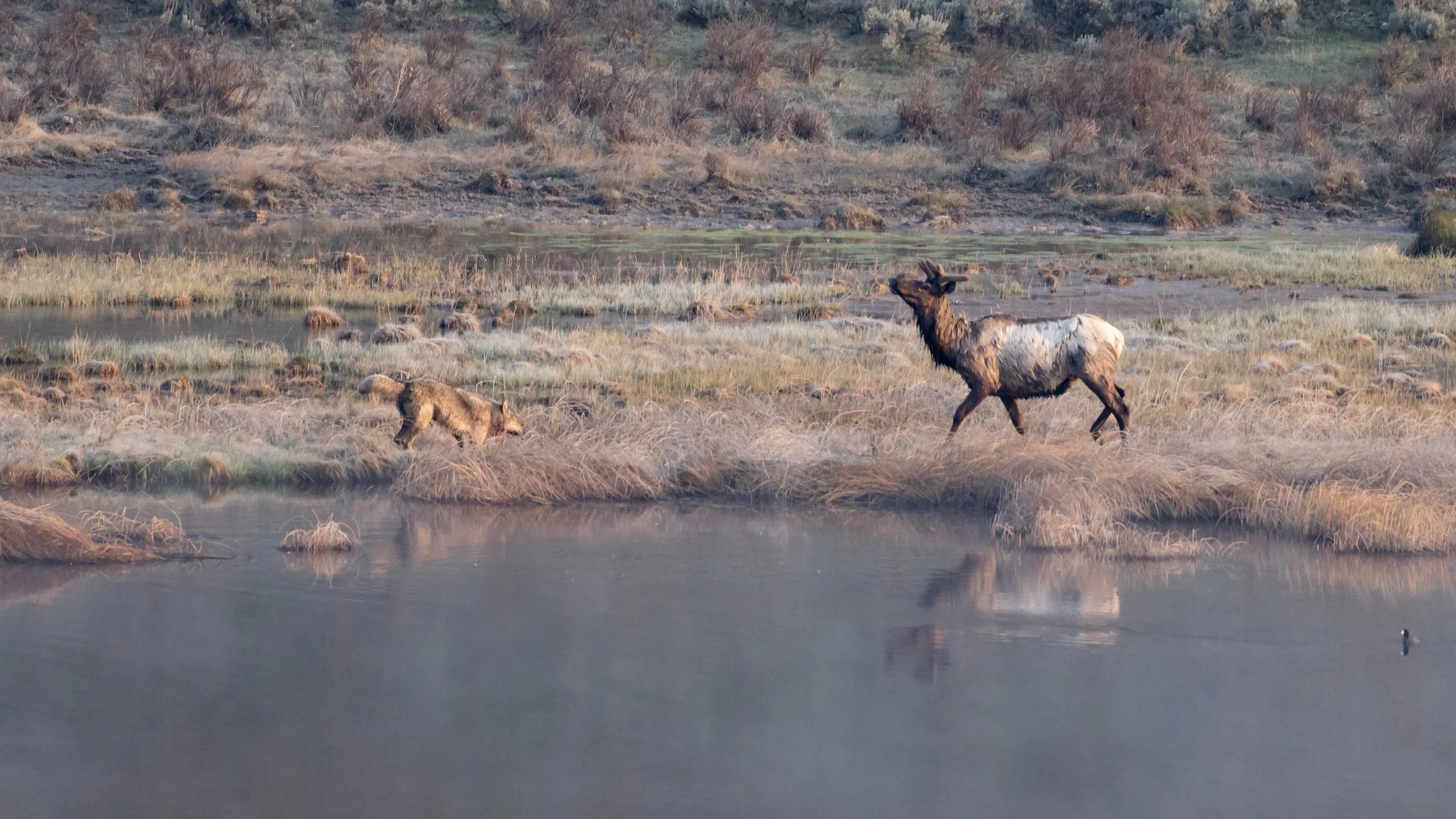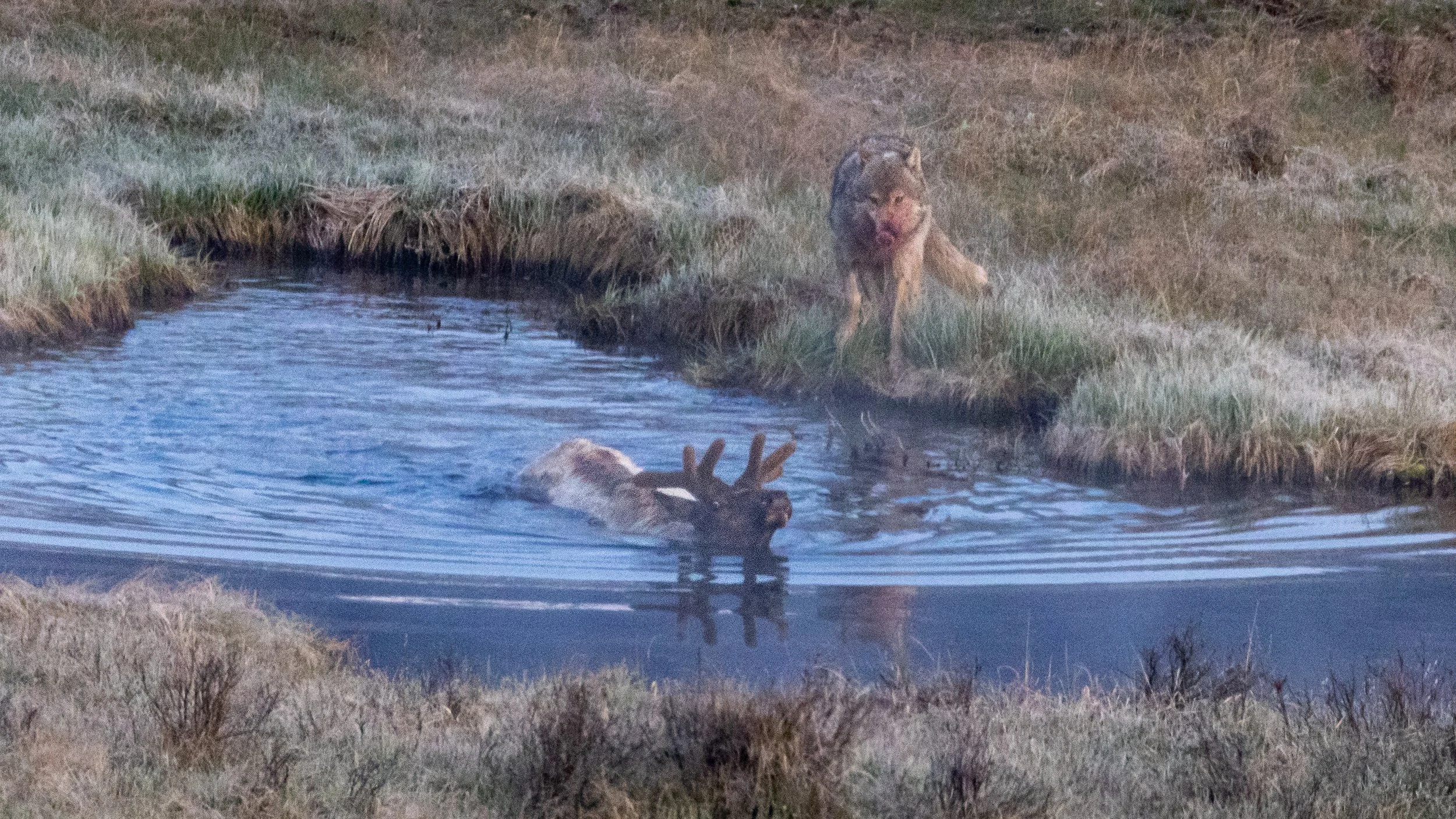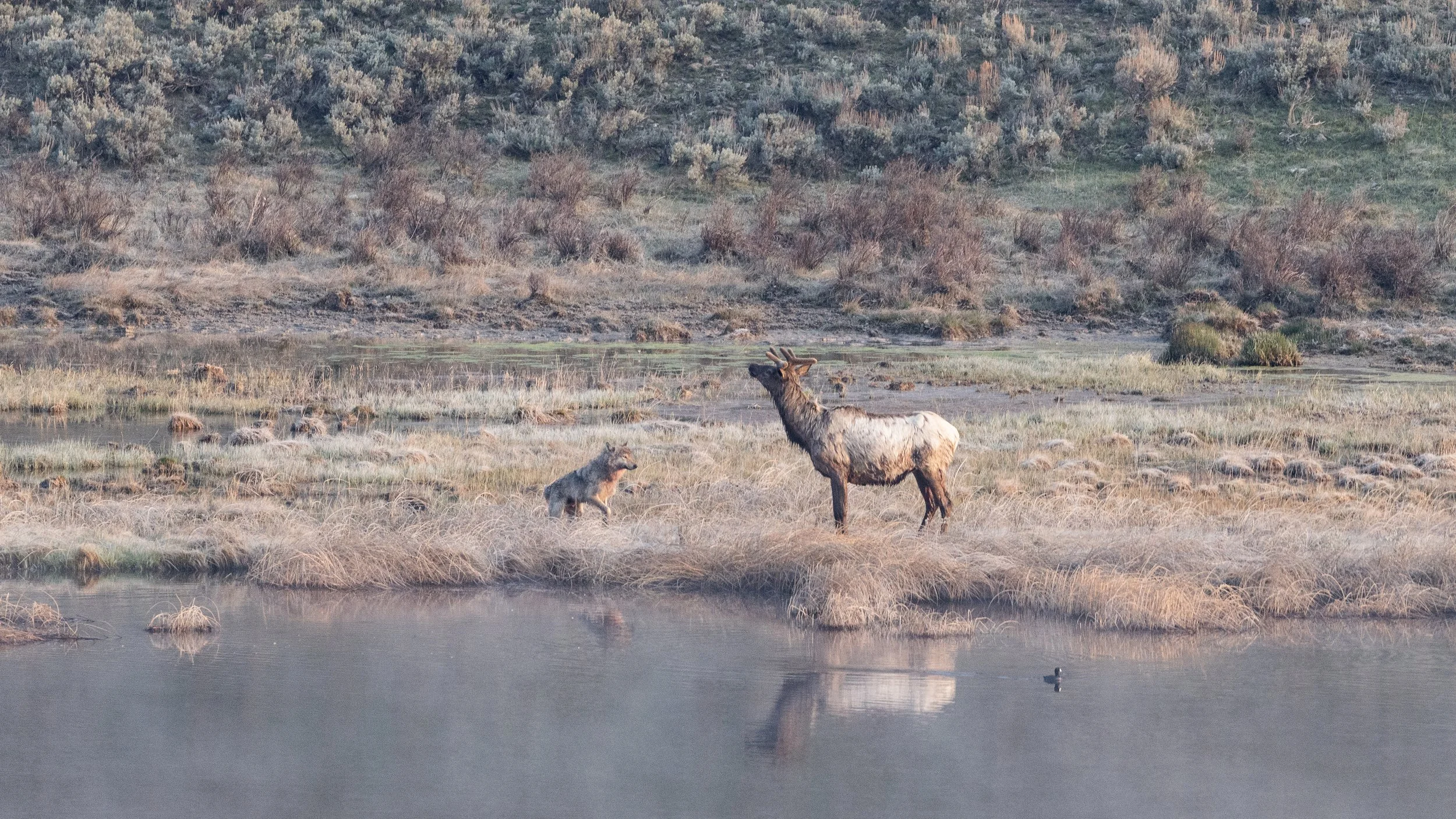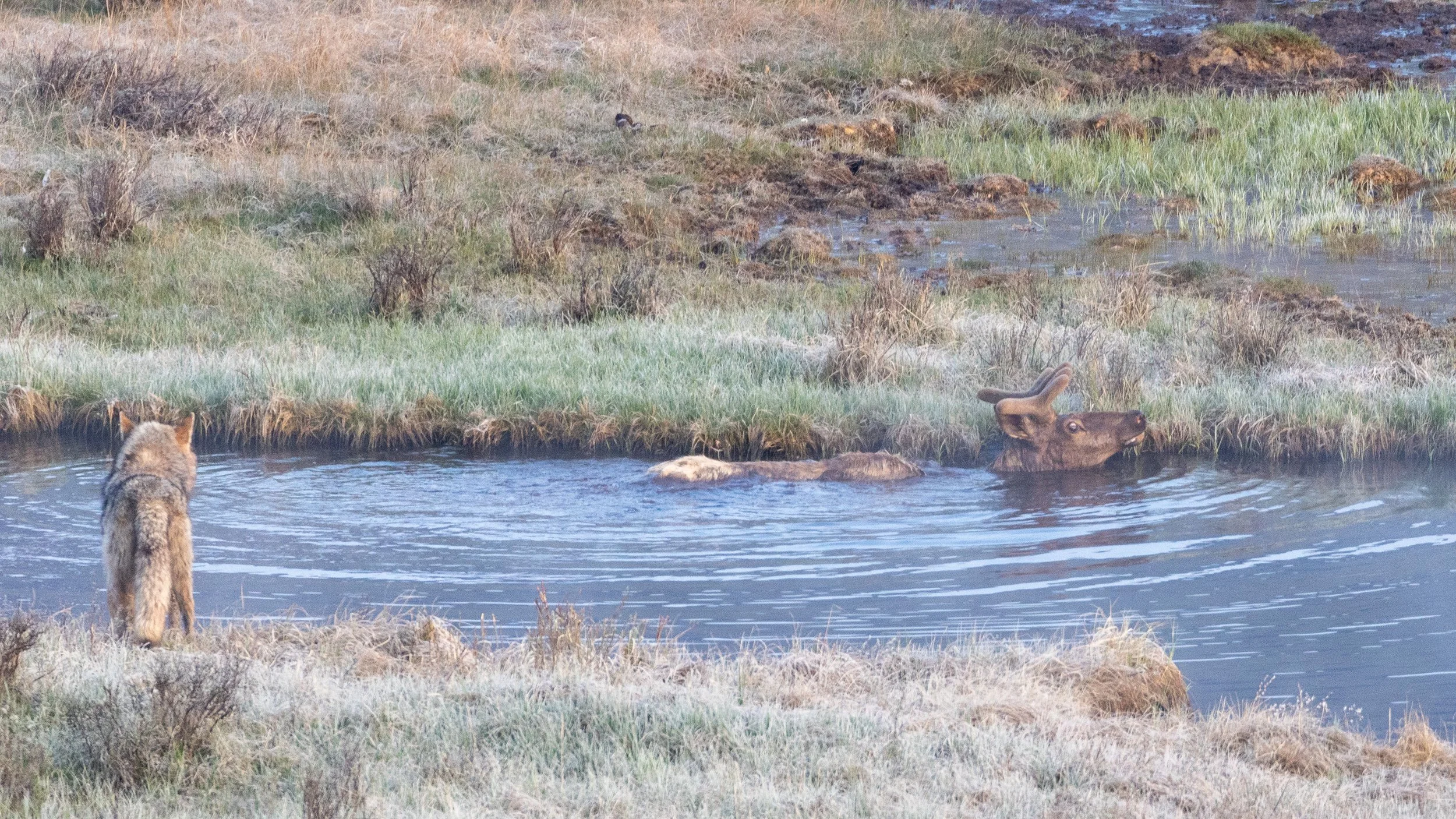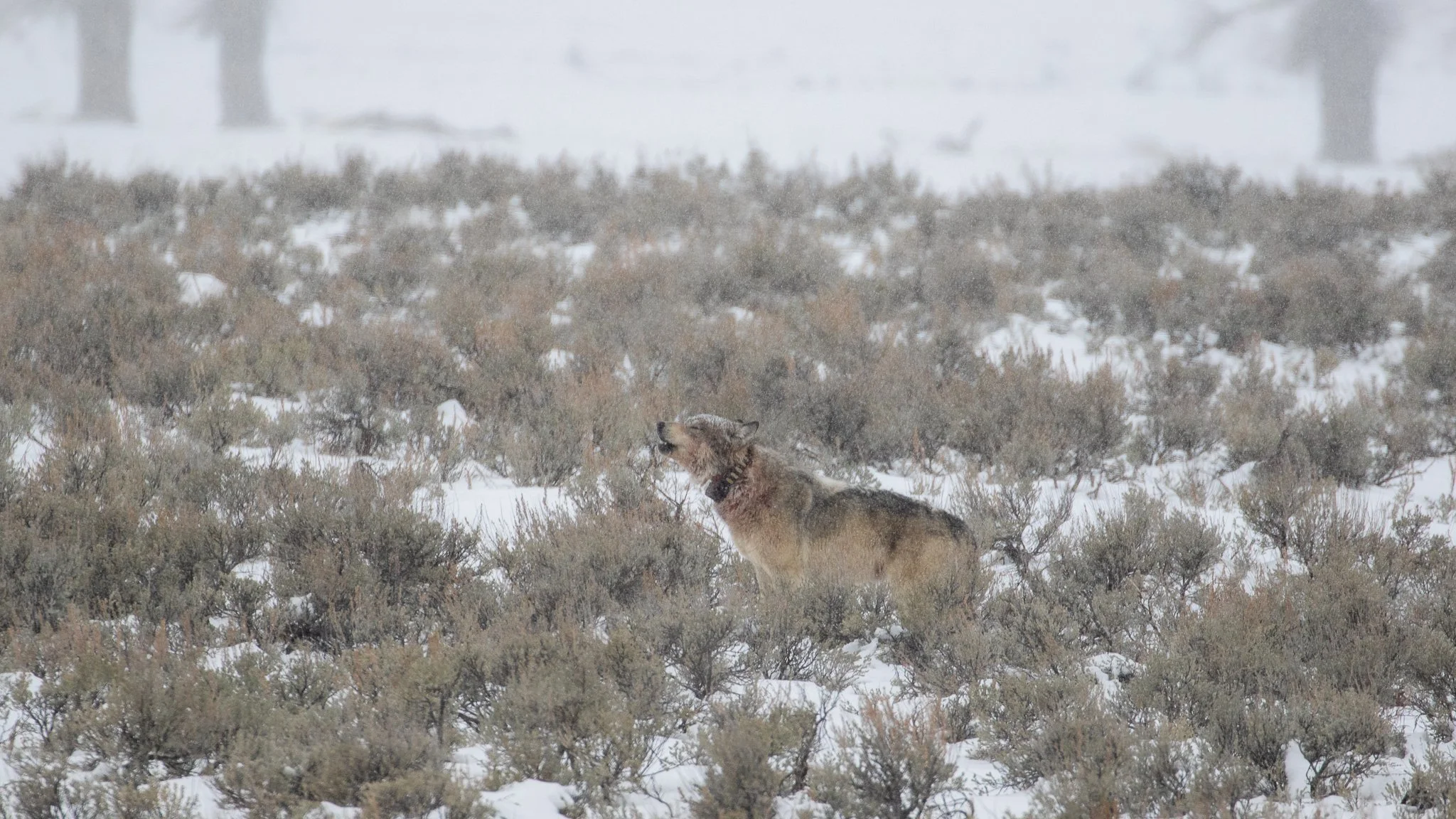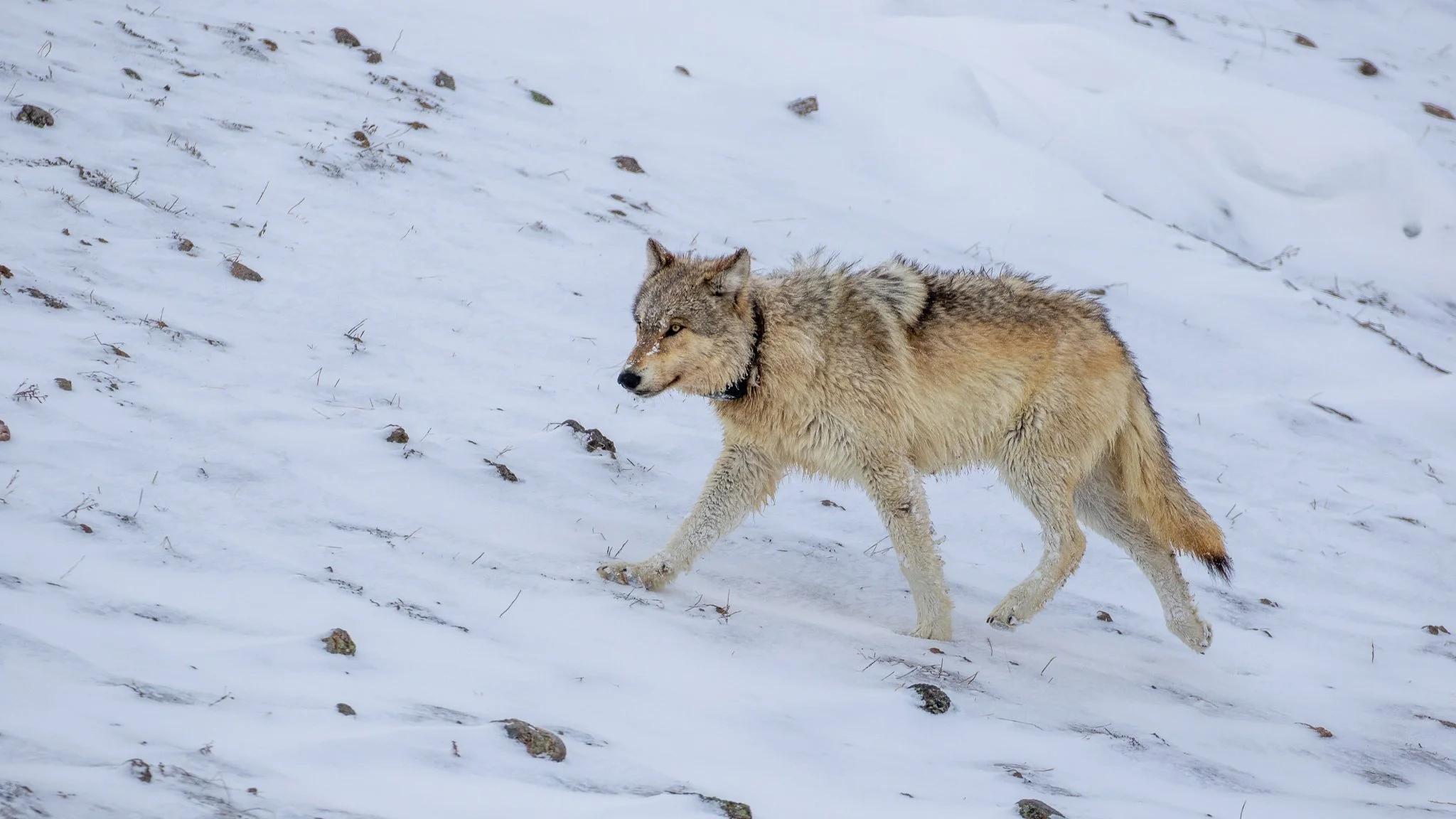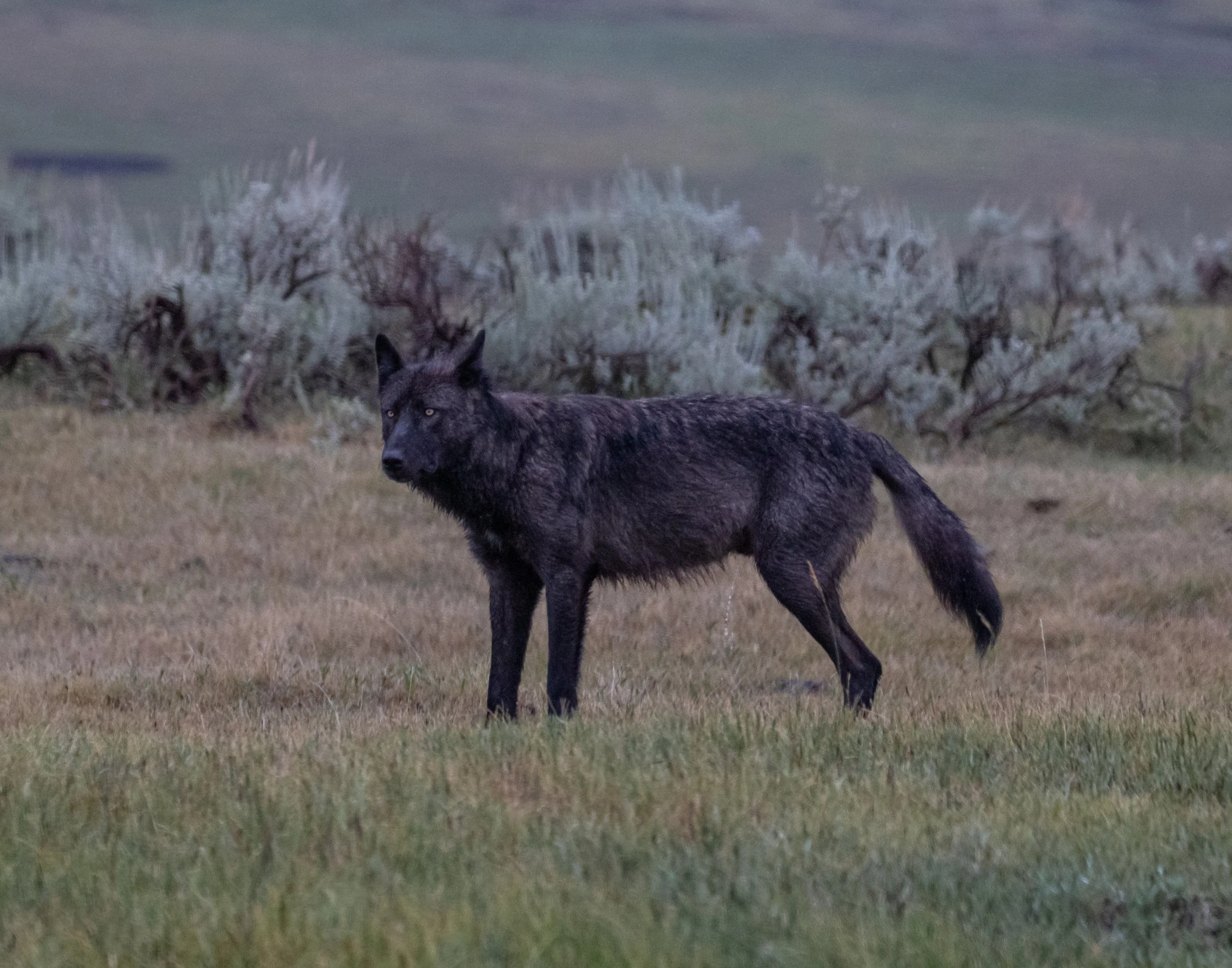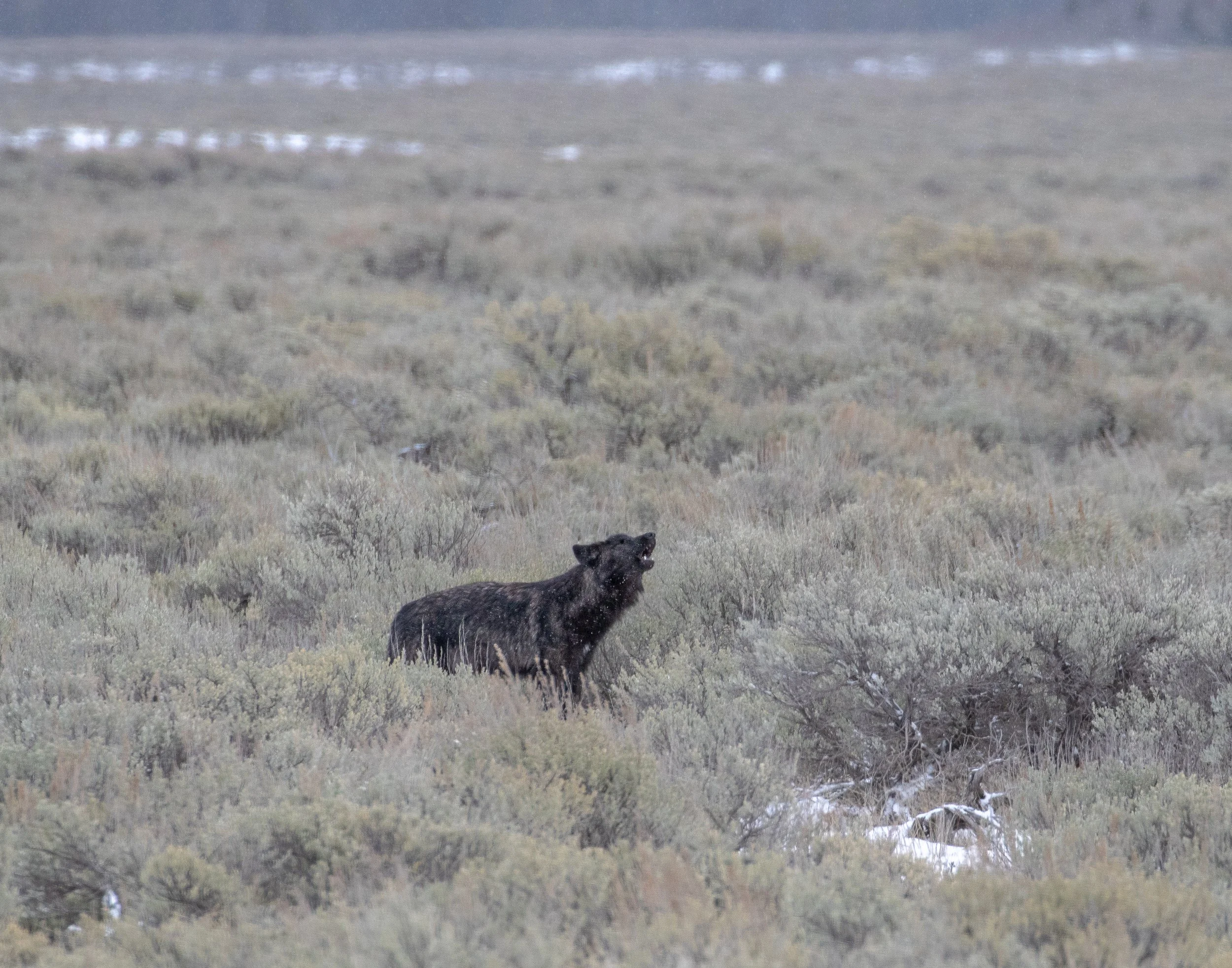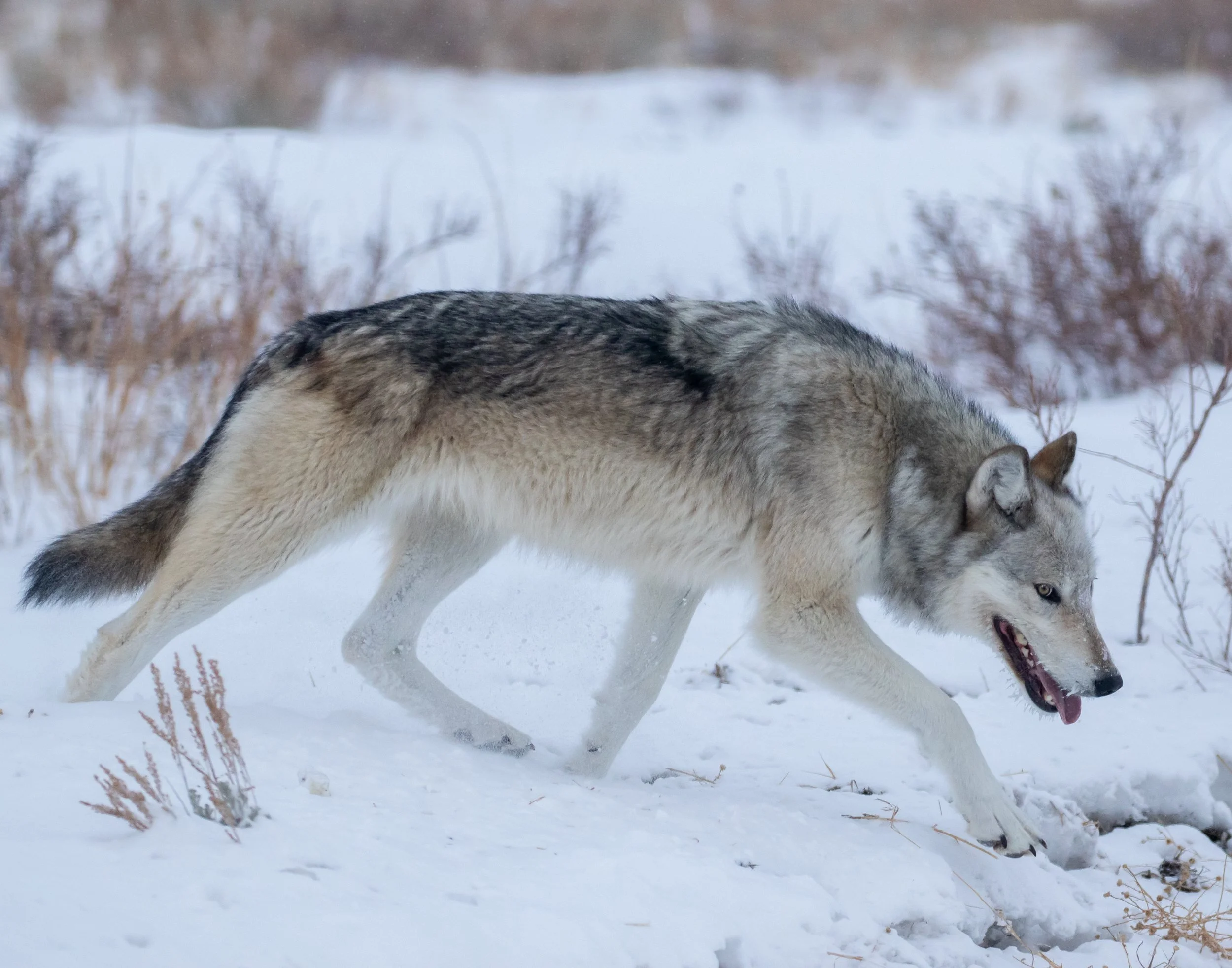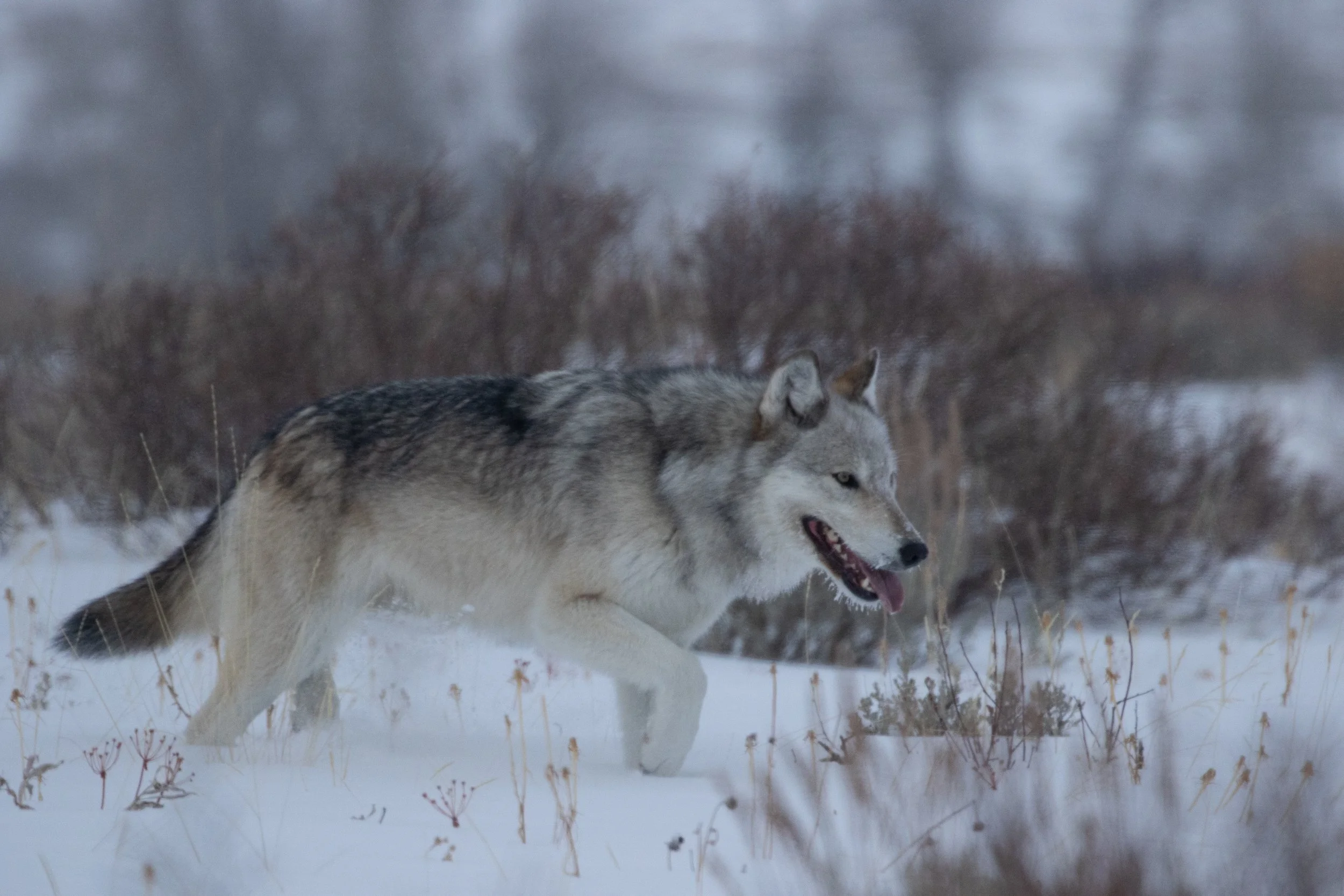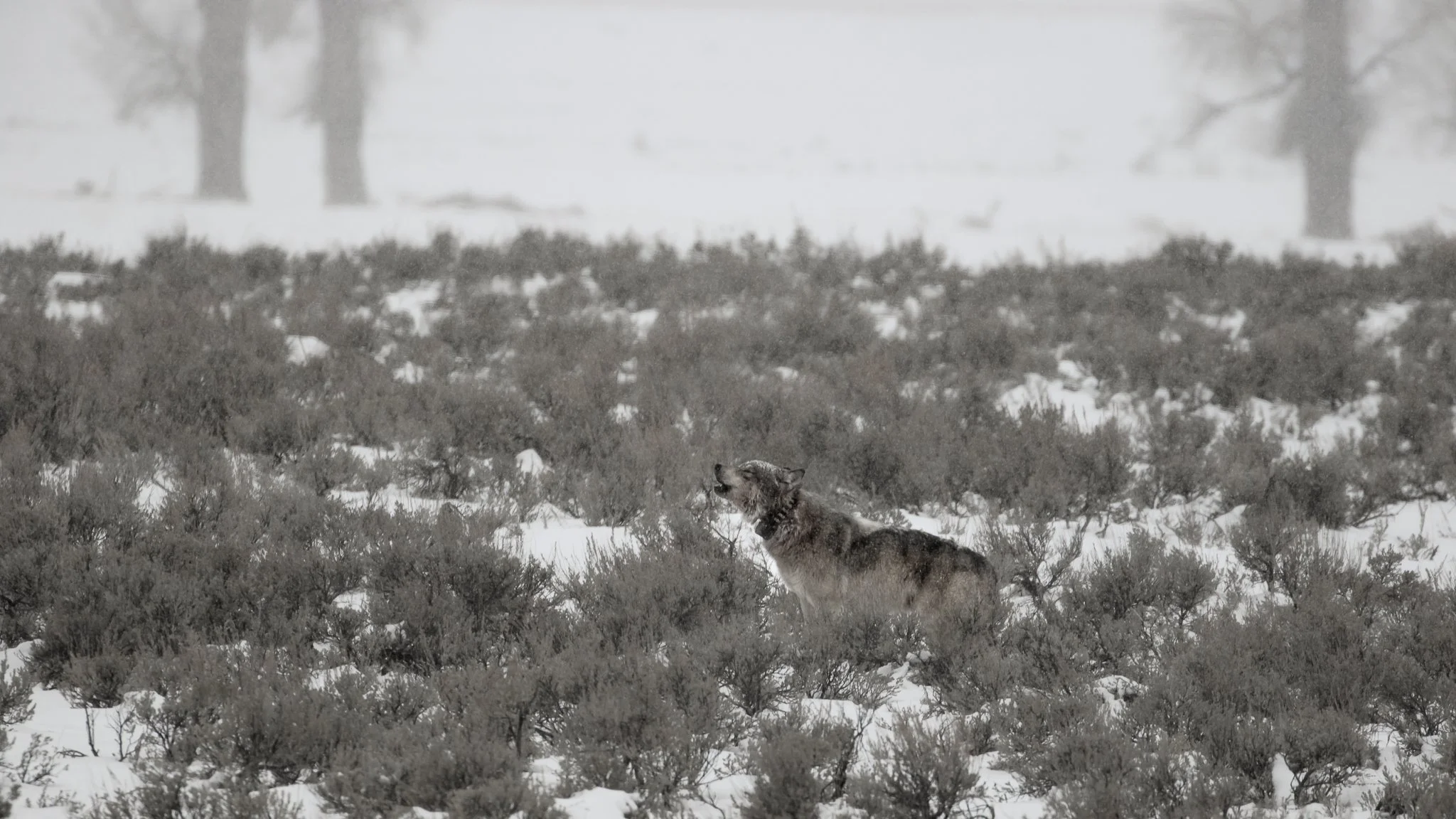
Grey Wolf
Grey Wolf
Canis lupus
Between 5 and 6 feet long and weighing between 90 and 120 pounds, the grey wolf is Yellowstone National Park's apex predator. As the top of the food chain, grey wolves play a critical role in maintaining the ecosystem's balance by controlling the populations of large herbivores like elk and deer. Their presence influences the behavior of prey species, which helps preserve vegetation and supports a diverse range of other wildlife.
These social animals live and hunt in packs, relying on teamwork and strategy to take down prey much larger than themselves. The reintroduction of grey wolves to Yellowstone in the 1990s has had significant ecological impacts, demonstrating the importance of apex predators in natural habitats.
Conservation: Yellowstone’s wolves have proved over and over again how important an apex predator can be to an ecosystem. Their restoring presence means that every large mammal that was in the ecosystem 400 years ago is also there now. Not surprisingly, the presence of wolves on the landscape presents issues of tolerance and conflict with people. This much maligned animal of myth has seemingly always held a place in our mind’s eye as a villain. I think perhaps it is the similarities we share. This reflection of our animal selves might poke and prod at our long-suppressed hunter-gatherer. In truth, the easiest way to live with grey wolves is more basic than emotions dictate. Wolves with stable packs will be taught by the pack how to successfully hunt elk. In the absence of teachers, wolves will eat whatever they can catch to survive. “Slow elk,” aka cattle, become part of the menu. By leaving packs intact, we minimize domestic animal conflict. When we hunt wolves, we splinter packs and increase wildlife conflicts, which increases depredation killings, resulting in the deaths of more wolves. This leads to the colonization of an area by new, less stable packs, again increasing conflict. Stop hunting wolves and shooting ourselves in the foot.
Diet:
Grey wolves are opportunistic, generalist hunters. Their jaws lack the strength of many felids, so they rely on teamwork and identification of the weakest individuals to eek out a living. Winter is when wolves are the most successful, as they have a hard time bringing down healthy well nourished prey. In the GYE, 85% of a wolf’s diet is elk. Nearly all the elk are less than one year old or older than 15 years of age. They will also prey on bison, moose, and an occasional deer. Tiny prey, grasshoppers, helps sustain pups during the lean summer months.
Mating:
Wolf observations in captivity have led to an “ideal wolf pack” image, with a dominant, alpha pair leading the way. In actuality, packs are more diverse. 75% of packs display “plural breeding” where more than one female bears pups. These pups are often from a single dominant male, but it’s not unusual for the father to be a subordinate male or a dispersing animal from another pack. Gestation is 63 days, and welping is typically late April to early May. The entire pack cares for the puppies with the mother nursing, but often participates in hunts, leaving the young with “babysitter wolves”.
Wolves are one of the few species that are truly territorial, meaning they will actively defend their territory and may kill a rival for just setting foot in their piece of ground. These territories are fairly stable from year to year, especially when human influence is minimal. Territorial boundaries are maintained through scent marking, howling, and patrolling to ward off intruders. This stability helps ensure consistent access to prey and the safety of the puppies, which is crucial for the survival of wolf packs. However, increased human activity and habitat disruption can lead to shifts or fragmentation of these territories even within Yellowstone National Park.
Yellowstone wolves have successfully decreased elk populations inside the national park to target levels. Then, due to density-dependent disease, intraspecific conflict, and prey abundance, the system stabilized. This has held steady for the last 15+ years and is known as the saturation phase. It’s important to remember that biology is a squishy science and that plus or minus 20% is still a trend.
